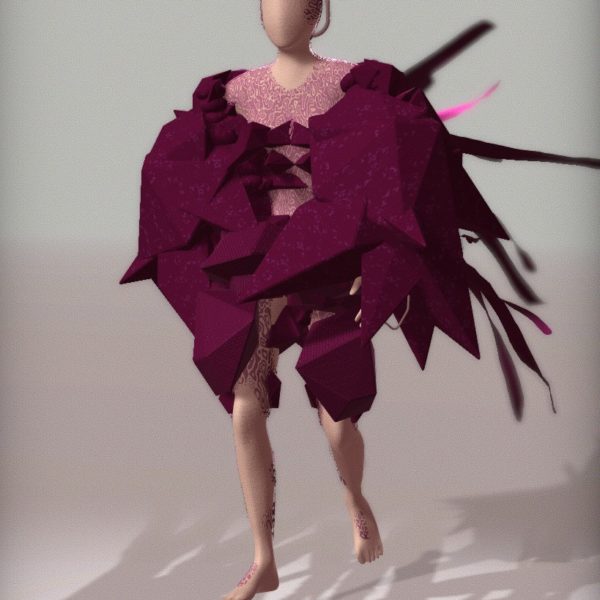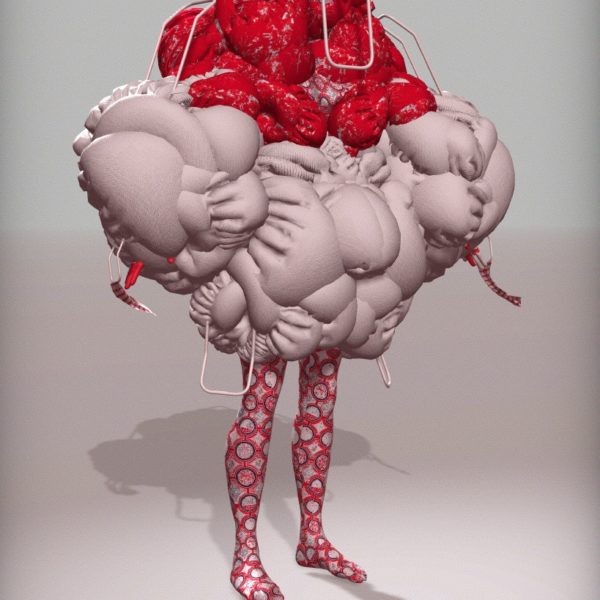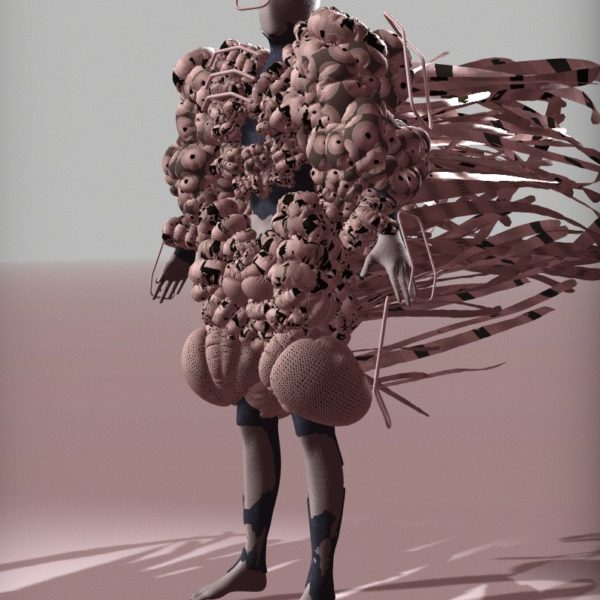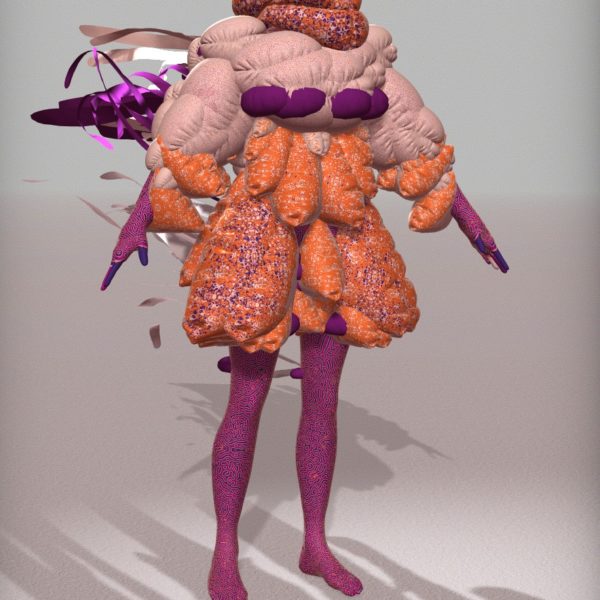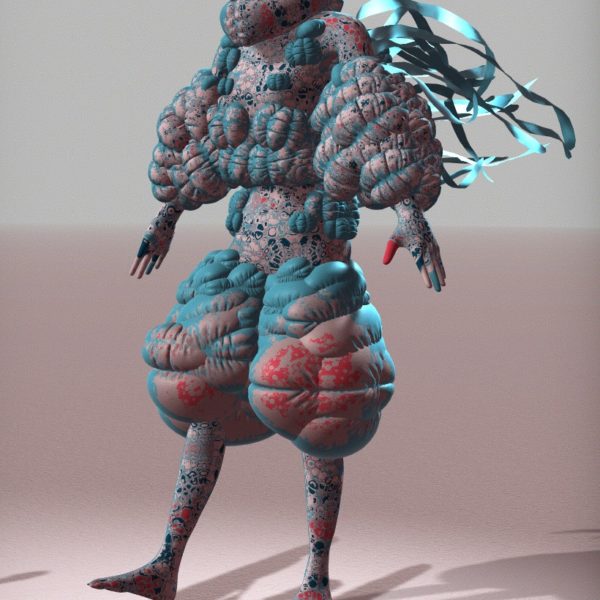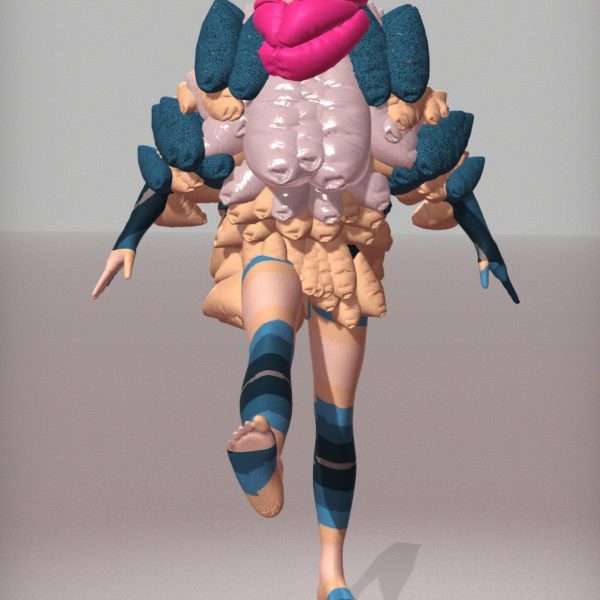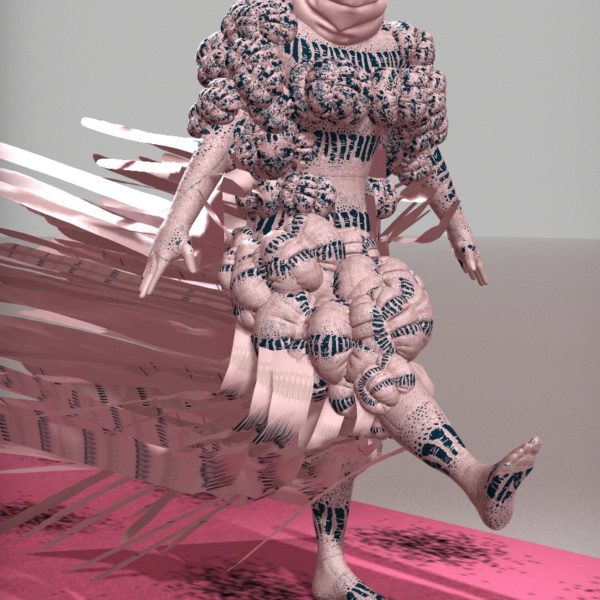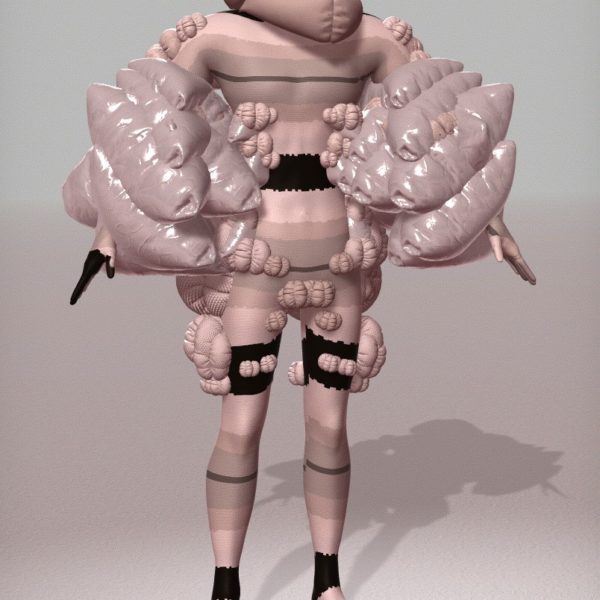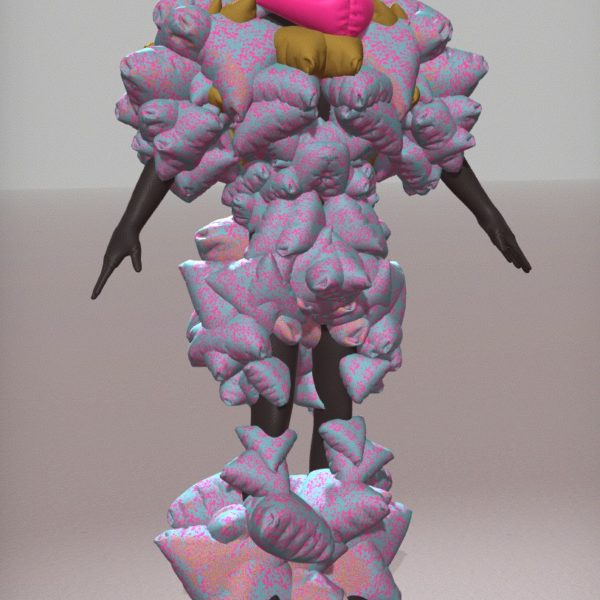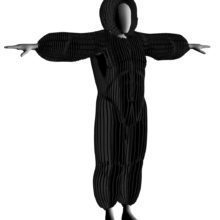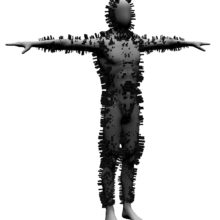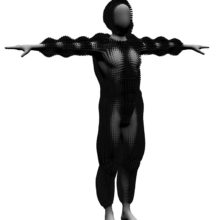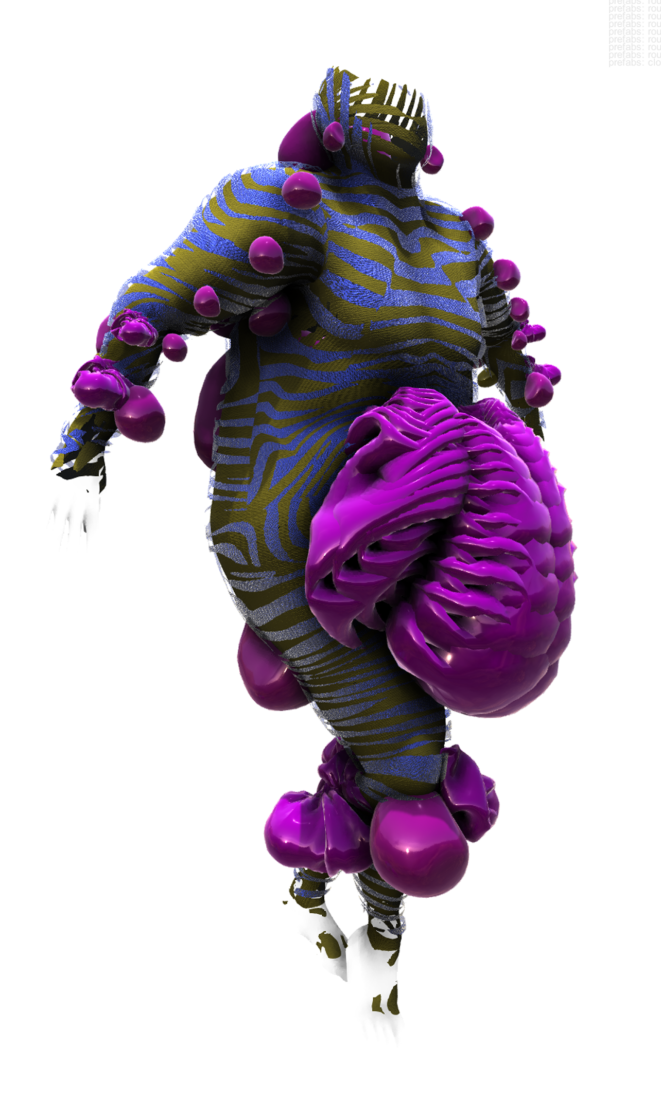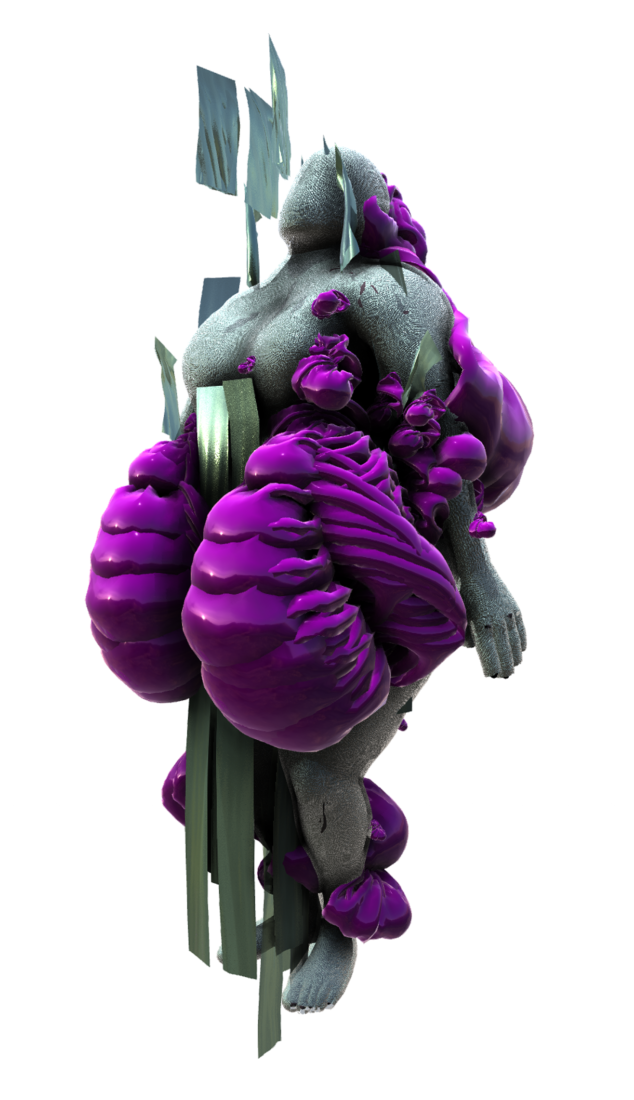07 | 2020
SKIN
SKIN is an interactive full-body installation based on a depth camera system and corresponding projections. The work shows digital outfits generated in real time, which the user can control with his body movements. Based on the user’s biometric data, a matrix of algorithms generates an always unique outfit to wear for the moment.
– This video is also downloadable in higher resolution over here.
Almost unnoticed, the users slip into various virtual bodies that deviate from the normative standards in different ways. The diversity of the human body, but also gender-specific attributions of colors or shapes can be experienced in a playful way and thus renegotiated for the user and his viewer.
body diversity
The normative body that is defined by the fashion industry does very little reflect the body diversity we have in reality. With digital tools, the representation of the individual body as well as customized outfits are already in reach. With SKIN, the user slips into a random bodyshape of a fluent gender. This body is used as basic matrix for the outfit to be developed by the algorithms.
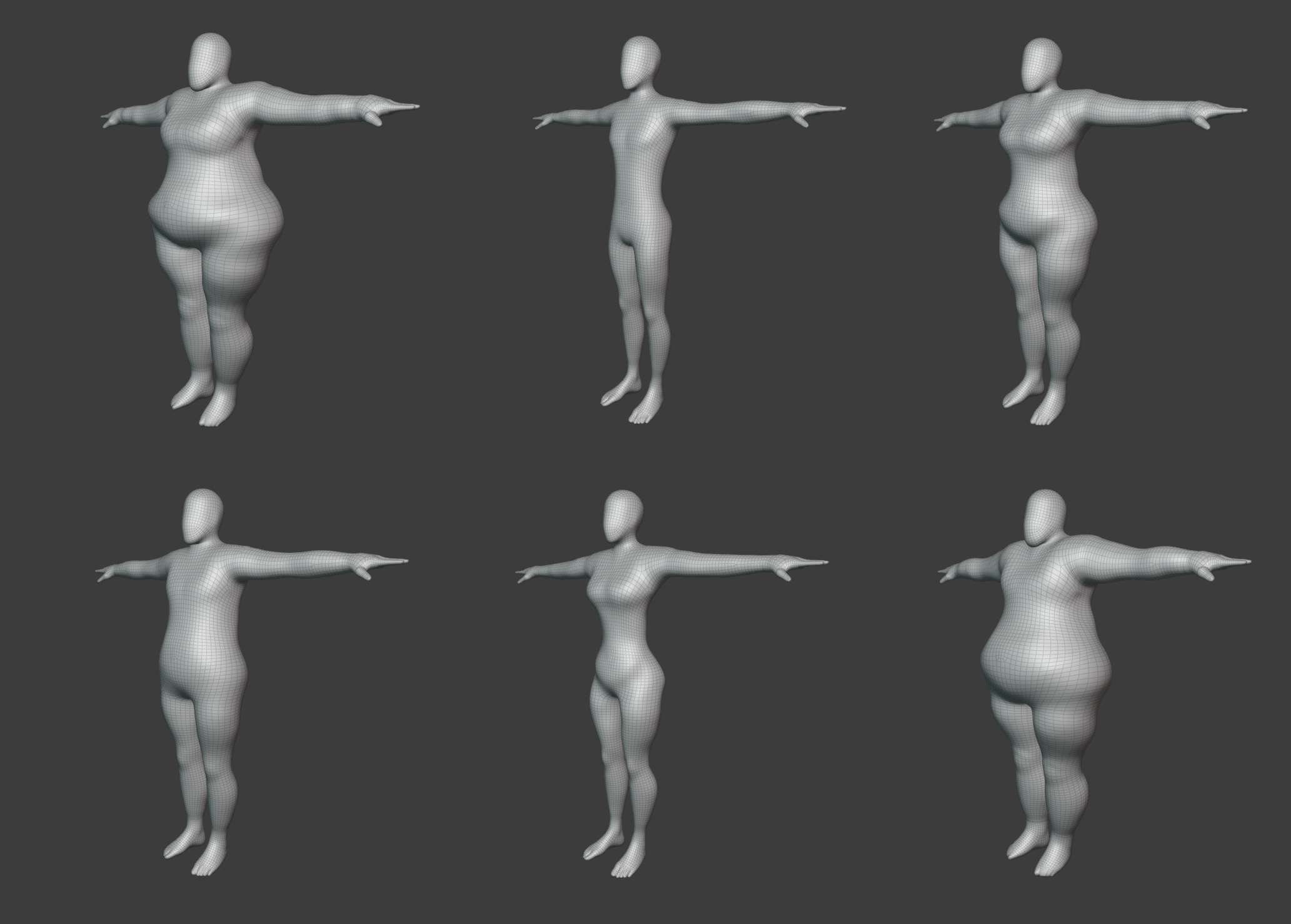
the unique outfit
The individual body and therefore its biometric data, like total bodysize or leg/body ratio are key parametes for each generated outfit. The body surface becomes an algoriothmic landscape, that is fitted with pieces of virtual cloth, based on body-specific features. Each outfit is always a unique one.
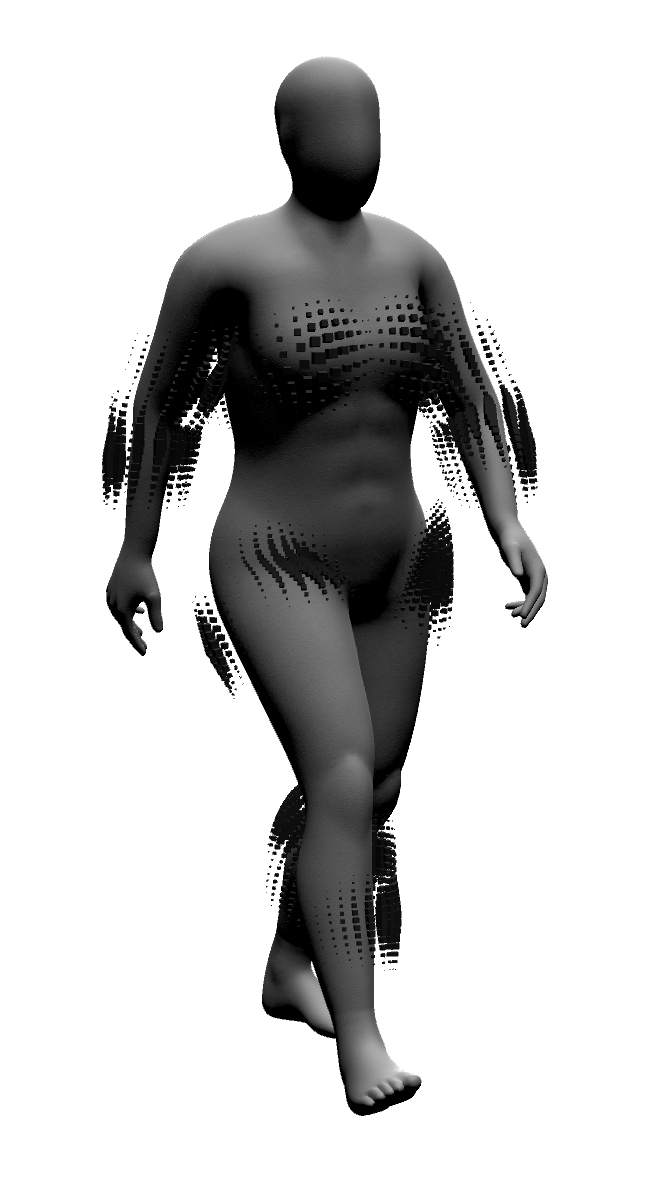
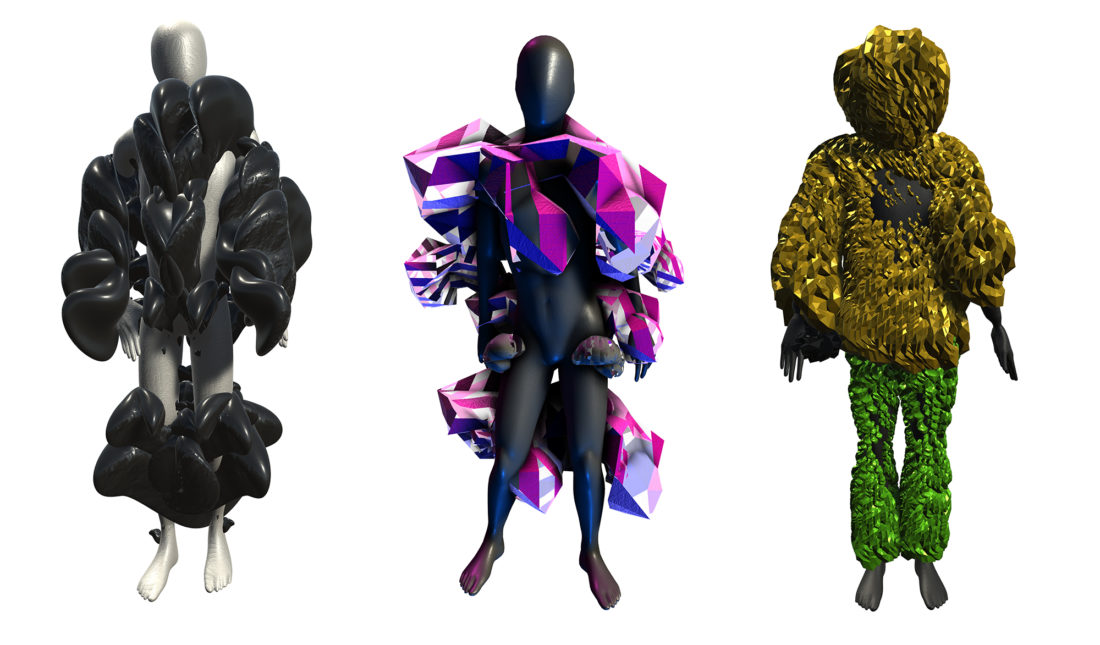
Installations
SKIN has been installed at several locations worldwide, from single-screen wall installation to multi projector room installation.
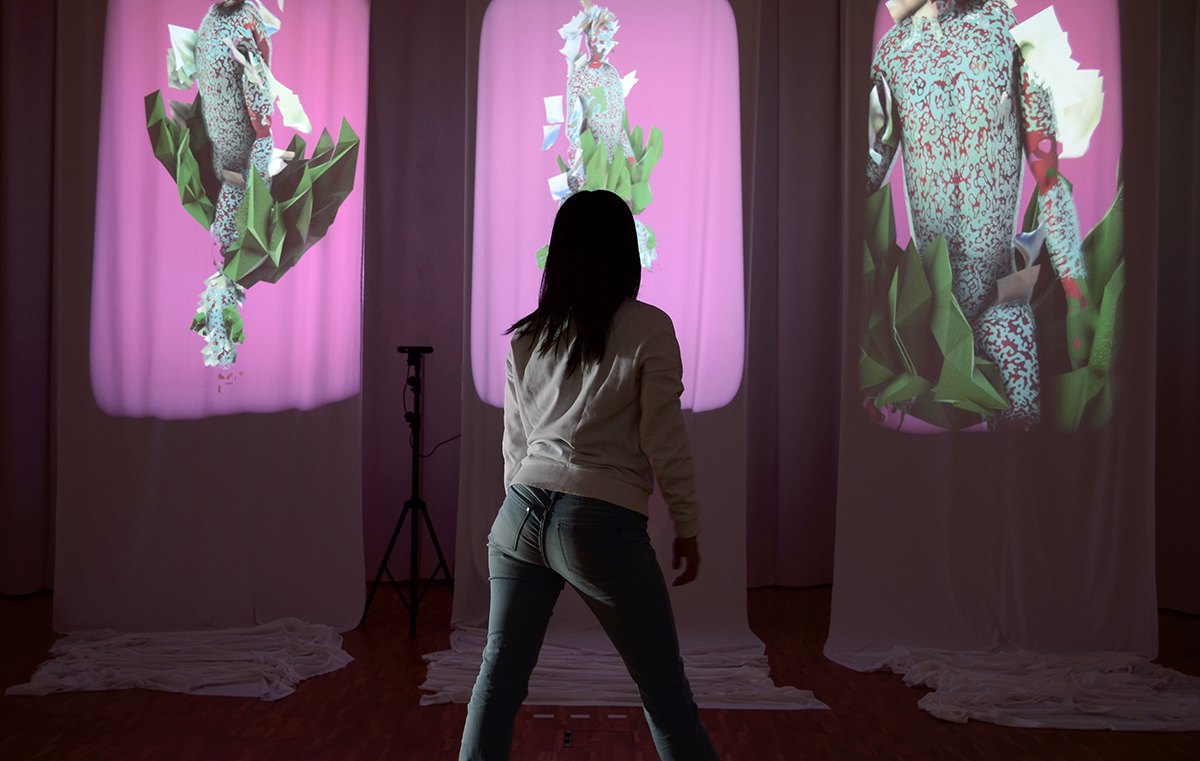
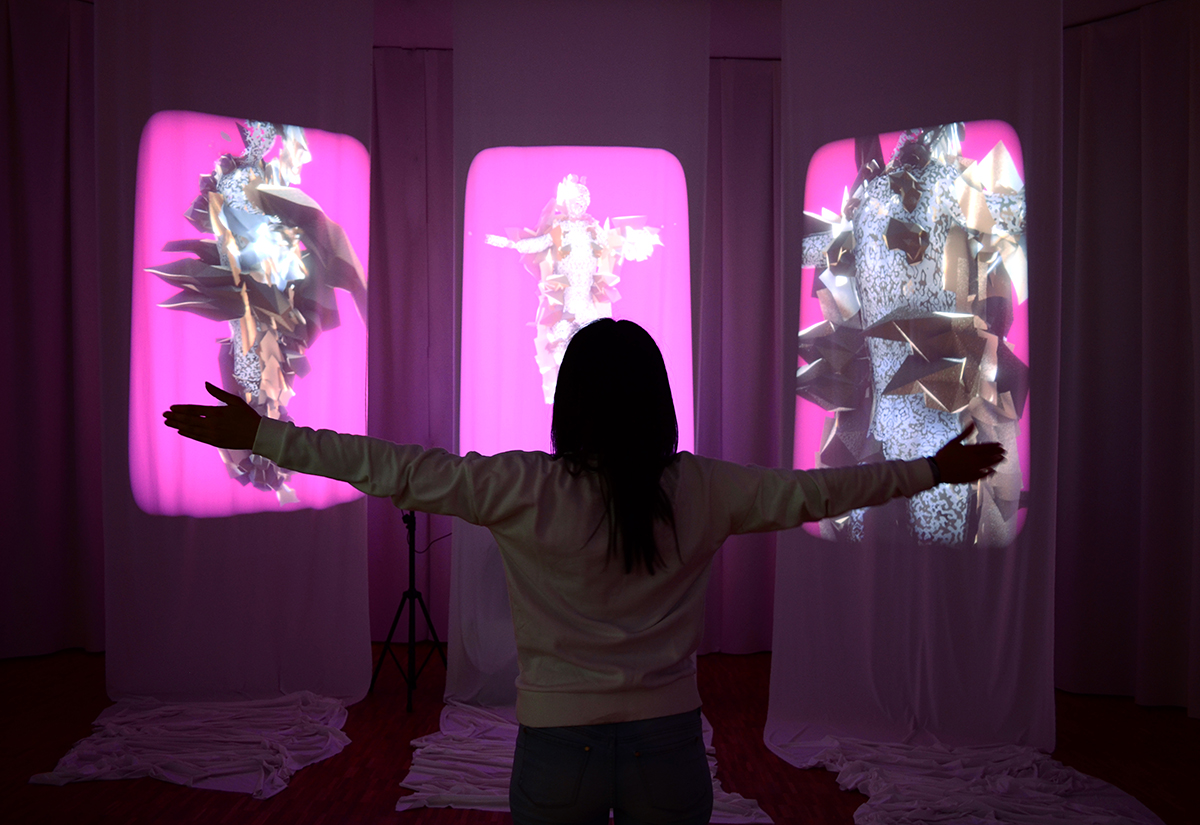
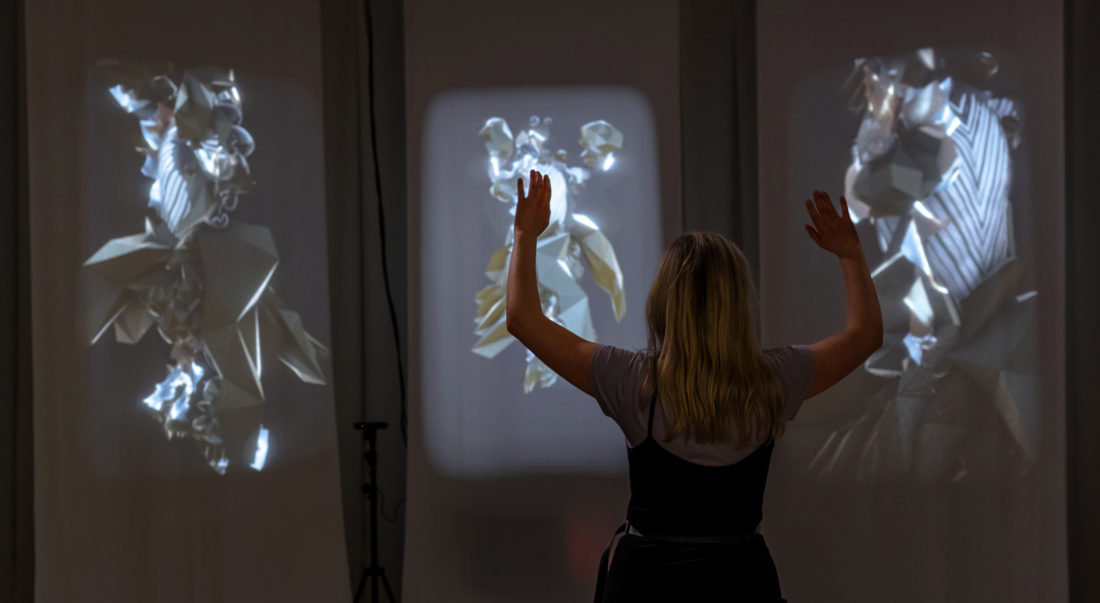
Installationsansicht SKIN (photo: Alexandra Ivanciu)
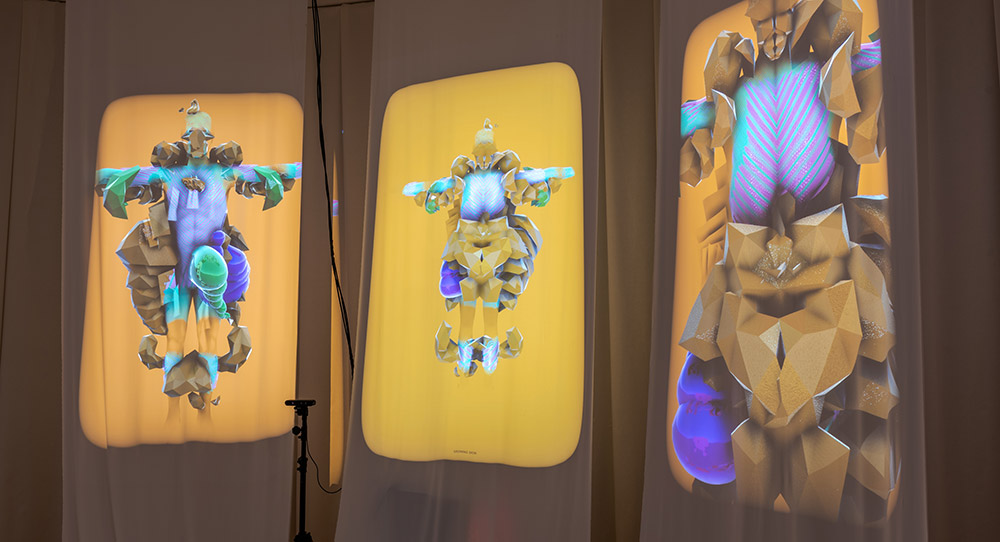
Installationsansicht SKIN (photo: Alexandra Ivanciu)

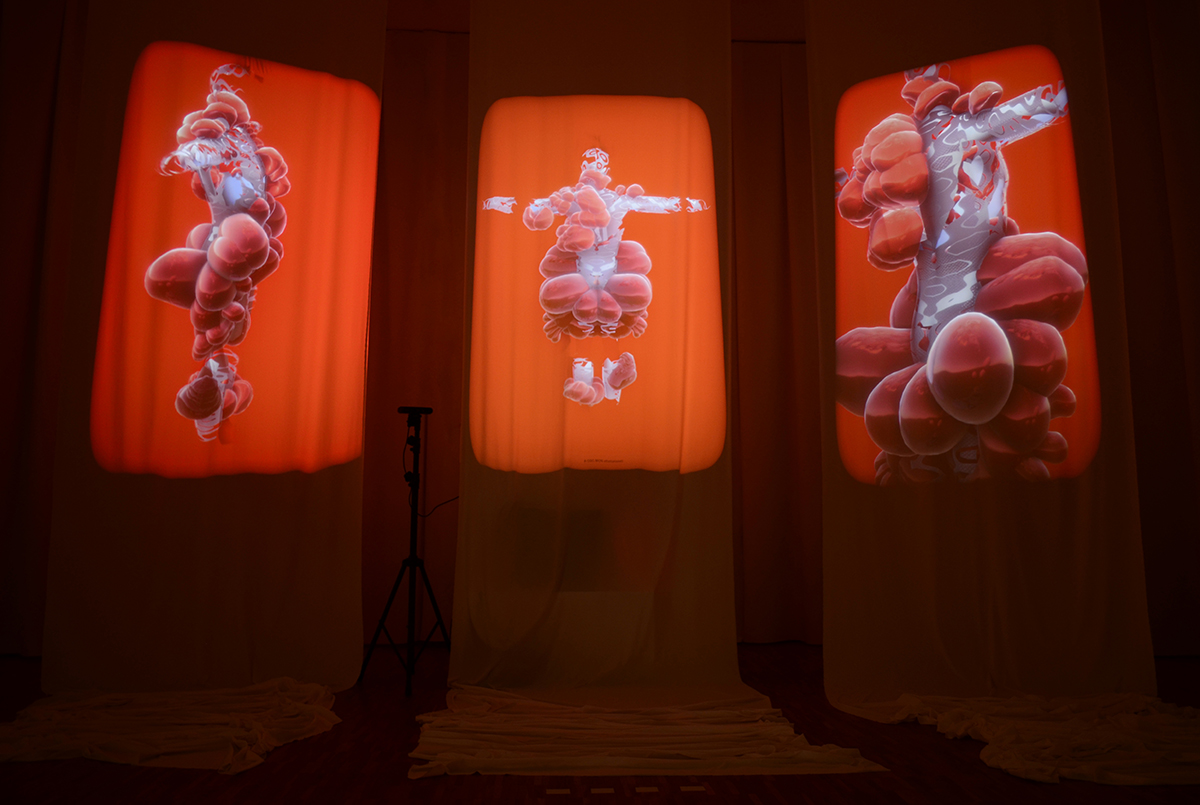
artist statement
Is Digital Fashion sustainable?
The fashion industry is in a sociopolitical and ecological crisis. Fast fashion is the image of an unleashed, profit-oriented capitalist structure that values neither conservation nor human rights. There is an urgent need to change this system to protect the environment.
Unfortunately, Digital Fashion today does not offer a serious solution to this problem, on the contrary, arguing real clothing with digital content can still lead to a worsening of the situation, if not handled mindfully. As with any new emerging technology, along with the dangers, there is always the possibility that major positive changes can take place. Virtual clothing enables the individual to express the need for individual jewelry or belonging in an immaterial way. In the digital space, the human body can thus be shaped in a non-invasive way and normative or gender-related attributions can be renegotiated.
Digital fashion requires powerful mobile computer hardware, depth-capable camera systems and new forms of visual representation beyond the screen. Today, these specifications still represent a high barrier to widespread use. With advancing technological development, this threshold will disappear in the foreseeable future.
What proper use might digtal, generative fashion have in the future?
The SKIN algorithms utilize the users body size and form to generate unique outfits. For now, the outfits come as prototypes with no proper cutting or sewing map. In a further stage of development of SKIN this can be solved with already existing technology. In respect of the reusage of old textitles or locally produced textitles, the algorithms can refer to those materials available to infinietly generate new fashionable outfits made from sustainable materials. As the outfit is generated entirely digital in the first place, the complete cutting and sewing guideline can be done in local machine labor with harvested and sustainable materials where it is needed.
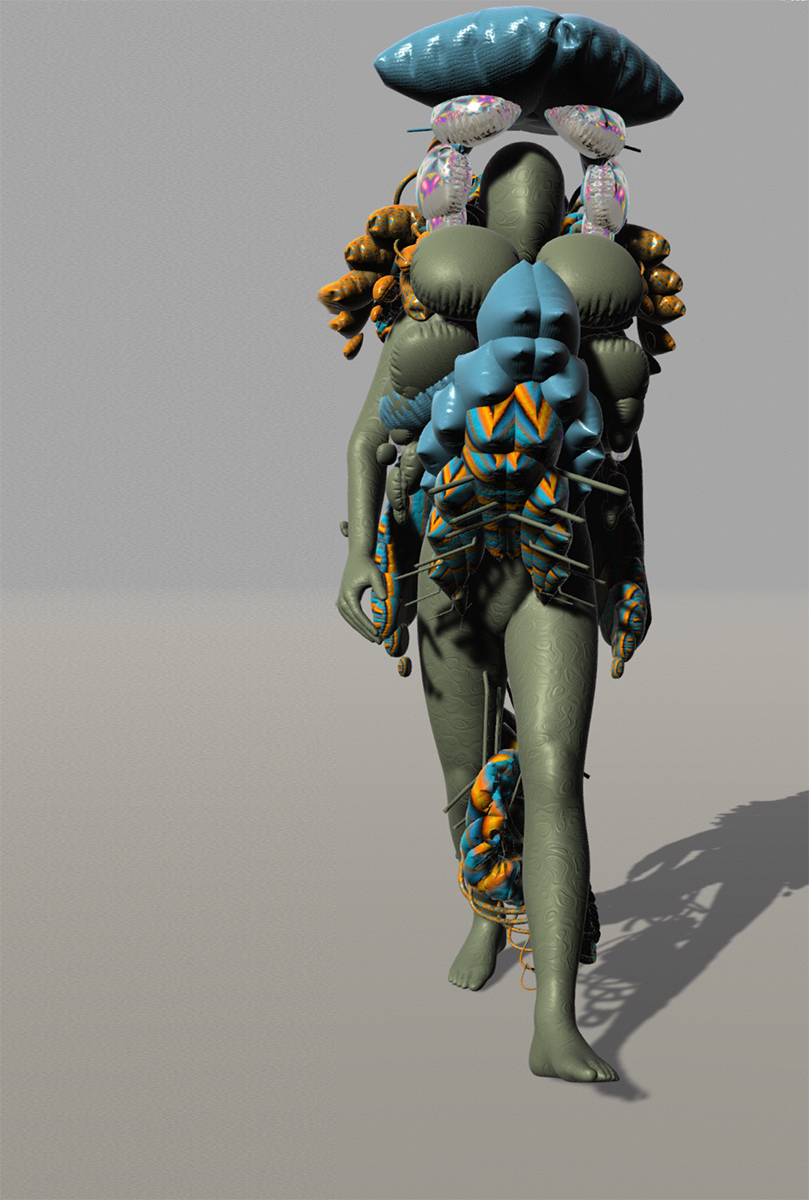
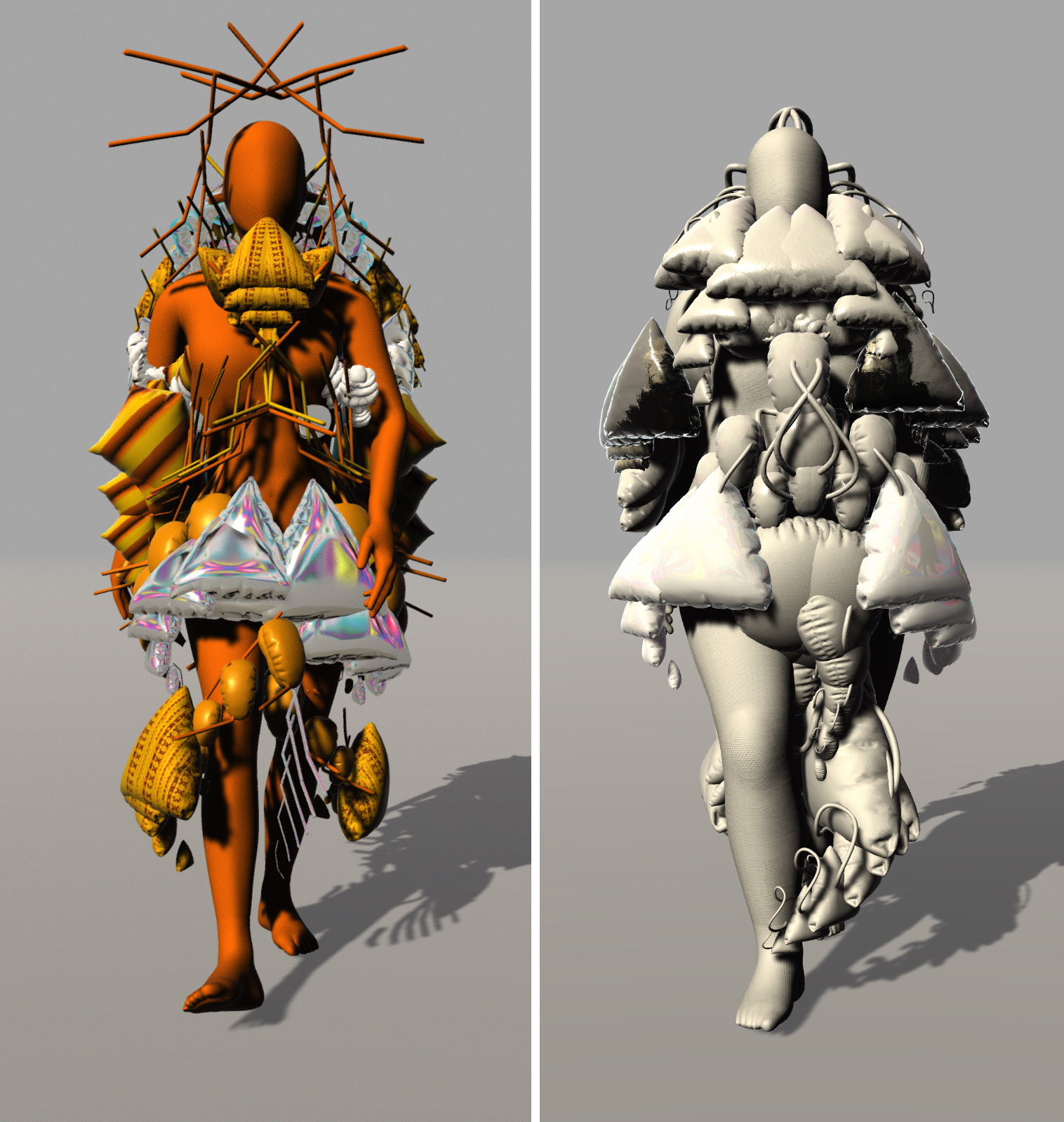
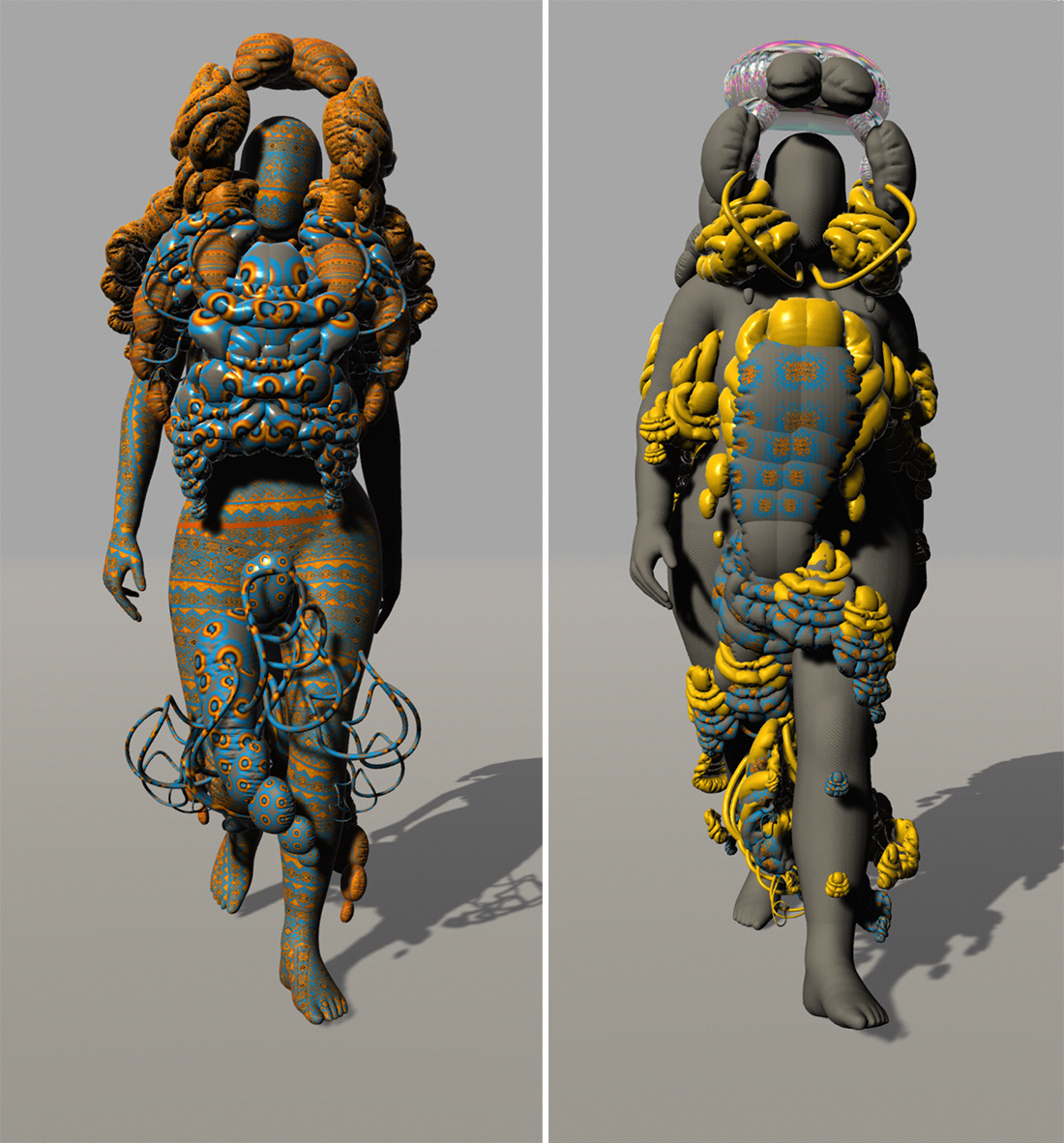
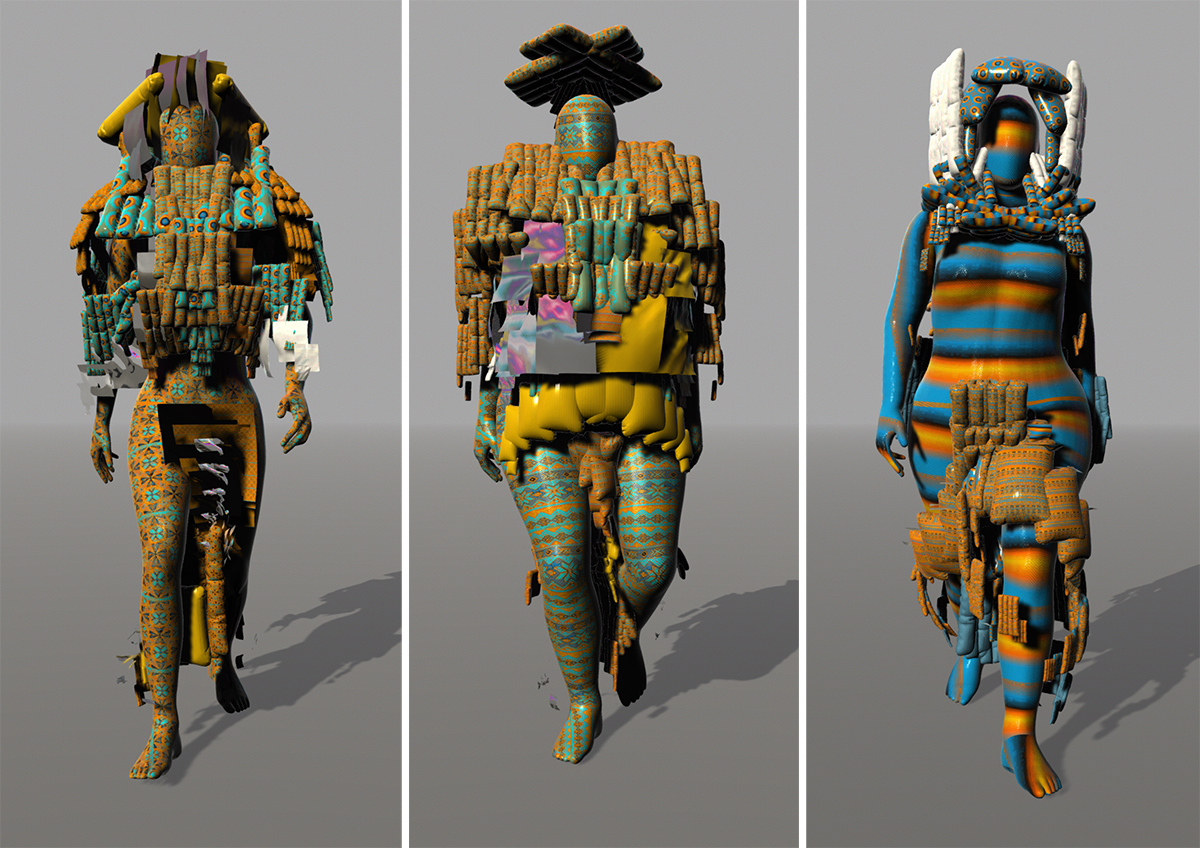

Installationsansicht SKIN (photo: Alexandra Ivanciu)
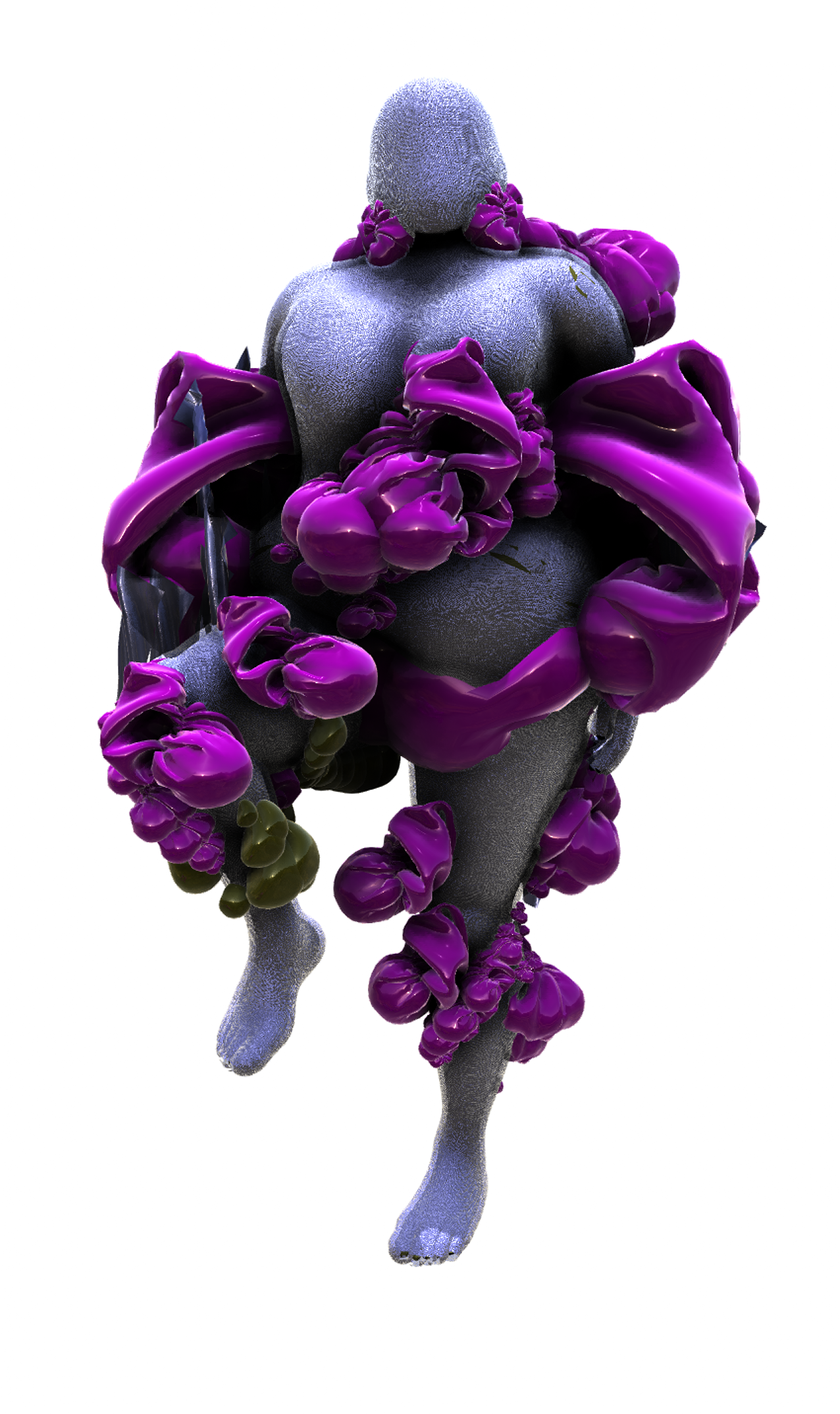
zuletzt geändert: 2023-09

